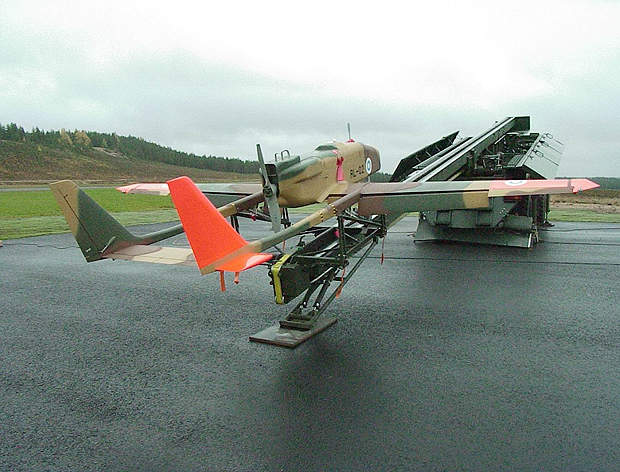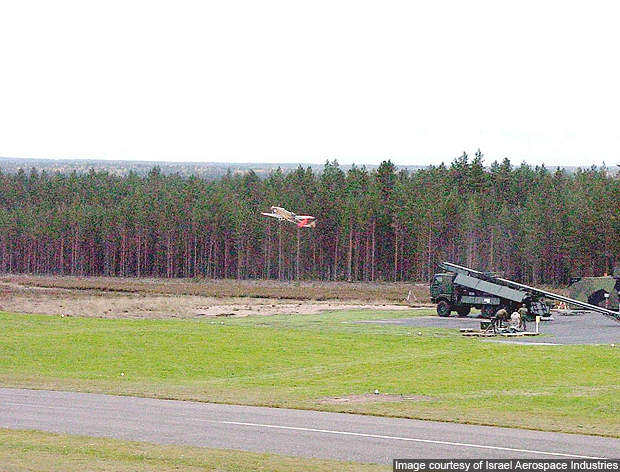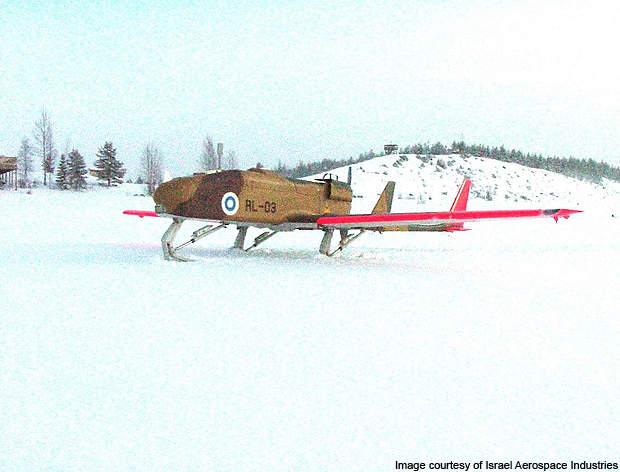The Ranger is a tactical unmanned aerial vehicle designed and built by a consortium of Swiss and Israeli companies Oerlikon Contraves, RUAG Aerospace and Israel Aerospace Industries (IAI). It is the first miniature fixed wing lightweight UAV to be certified to fly in civilian aerospace and populated areas.
The UAV was introduced in June 1999 to meet the requirements of Swiss Air Force. The aircraft captures real-time imagery or videos and transmits them to the ground control station (GCS) via satellite communication datalink. The aircraft was showcased at the Tampere International Airshow held in 2010.
Flying at an altitude of 18,000ft (5,486m), the UAV can provide real-time intelligence da ta on a battlefield by executing surveillance, reconnaissance, target acquisition and damage assessment operations over a large area.
Ranger UAV orders and deliveries
The Swiss-Israeli consortium delivered the first Ranger system to the Swiss Air Force in June 1999 upon successful completion of military exercise conducted by the Swiss Armed Forces. Two more systems were delivered in the same year. Swiss Air Force received another Ranger in December 2001 during the inauguration ceremony of its new UAV training centre in Emmen, Switzerland.
The consortium was awarded a $20m contract by the Finnish Ministry of Defence in September 1999 to provide three Ranger systems. The first Ranger UAV was delivered to Finland in October 2001.
Ranger unmanned air vehicle design
The Ranger is designed to take-off automatically from a track mounted hydraulic catapult launcher and can land on grass strips or unimproved runways, concrete runways, snow or ice. The design of the Ranger is similar to the Scout UAV system manufactured by IAI.
The modular payload system allows the Ranger to perform a range of civilian and military operations. It can execute day and night battlefield missions even in adverse weather conditions.
The UAV can be pressed into service for artillery adjustment, target designation, electronic warfare, electronic intelligence and radio relay missions. Its civil operations include border and coast guard patrol, detection and monitoring of nuclear radiation, traffic control and law enforcement. The UAV can also detect and monitor floods, forest fires, earthquakes and volcanic eruptions.
Features
The Ranger system is fitted with high aspect ratio wings below the fuselage section. It is also equipped with a twin-boom tail, a rudder, combi-television, a forward looking infra-red (FLIR) camera, an emergency parachute system and modern avionics. The vehicle’s airframe is constructed with composite materials to decrease the chances of radar detection.
Each Ranger system incorporates three to six UAVs, a GCS, a remote communication terminal (RCT), a hydraulic launcher, mobile receiving units (MRU), two recovery vehicles and a set of maintenance and logistics equipment. The system can also be fitted with a variety of payloads as required by the customers.
Sensors
The UAV is equipped with Tamam’s multi-optronic stabilised payload (MOSP) including electro-optic (EO) and infra-red (IR) sensors on the retractable turret. It is also fitted with an RAPS or microwave ATOLS which tracks, scans and evaluates the position of the UAV approaching the GCS from a 10km range.
The scanned data is transmitted to the GCS, which executes safe landing even in poor visibility conditions.
Radars
The Ranger is fitted with synthetic aperture radar (SAR) for mine detection, electronic intelligence (ELINT), communication intelligence (COMINT) and a laser designator.
Engines
The aircraft is powered by a dual cylinder two stroke engine which produces 31.5kW of output power.
Ground control station (GCS)
The data captured by the Ranger is processed, retrieved and stored at the GCS built by Israel Aerospace Industries, Oerlikon Contraves and RUAG Aerospace.
Communication between the vehicle and the GCS can be established through secure direct Line Of Sight (LOS) data link.
The Ranger can be controlled automatically from the GCS through the Remote Communication Terminal (RCT). The GCS and RCT shelters are fitted on trucks which provide high mobility and maximum protection to the crew against anti-radiation missiles. Both units can transmit or receive data through an optical fibre cable connection.
The GCS features three or four operational crew, four technical crew, support personnel and a mobile receiving unit (MRU) which supplies real-time battlefield FLIR imagery or videos captured by the vehicle, to field commanders.
It is also incorporated with an advanced video receiving system, an image frame freezing device, an alphanumeric and graphic symbol display, a digital map display and mission control devices.
Performance
The Ranger can fly at a maximum speed of 240km/h. The range and service ceiling of the UAV are 180km and 5,486m respectively. It can loiter in air for a maximum of 6 to 9 hours. The aircraft weighs around 45kg and its maximum take-off weight is 280kg.





